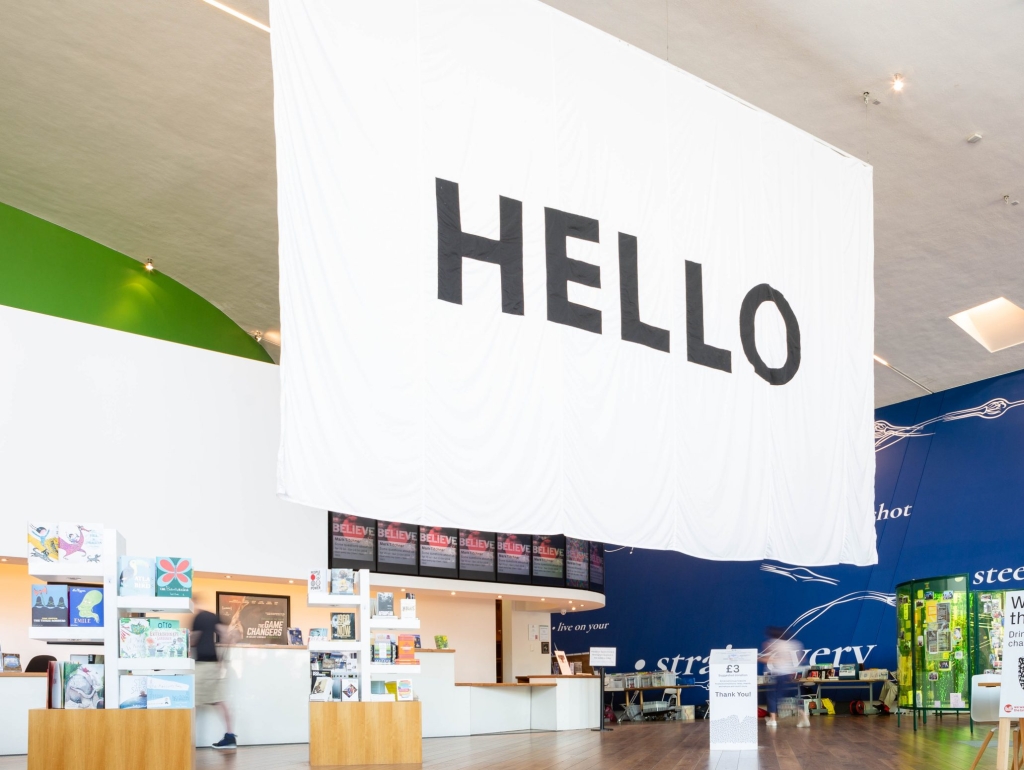Why is now a good time to give Gee Vaucher a retrospective?
Vaucher’s huge body of work is virtually unknown and has not yet received the acclaim it deserves despite having a very big following for her Crass work. She has been working for over 50 years in Essex, and it feels right for Firstsite to celebrate this achievement locally, regionally and internationally. Gee’s work is at once timeless and extremely timely. Her political work deals with issues that continue to be relevant today. It just so happens that on the eve of her exhibition opening one of her artworks from 1989 has gone viral in relation to current politics. Essex has a long history of activism and radicalism, and Gee is another example of this great legacy.
A lot of Gee’s work seems to be around family and society, how does this connect with the vision for Firstsite’s programme?
Gee’s work is very democratic. She uses common materials and references we can all recognise and understand. Firstsite aims to be welcoming to as wide an audience as possible. We value our local community, and we want the building to serve local families and benefit society as a whole through the discovery and appreciation of art.
How do you see Gee’s impact in contemporary society?
Gee has very strong principles and values, and in a world that is increasingly globalised and commercialised this becomes all the more important. She is very active and engaged in contemporary society, beyond just her art practice. Through her work, she also promotes the healing and inclusive nature of art.
Can you explain the importance to Gee of Dial house to her art practice?
Dial House has been Gee’s whole life. It is an artwork in its own right – a creative experiment in alternative living, collaboration and skill sharing. She has been living there since the 1970s and her and Penny Rimbaud work very hard physically on keeping the house and garden in good order. Gardening is one of Gee’s great passion and very meditative for her. They have tried to recreate some of the community atmosphere that Gee grew up with in post-war working class Dagenham.
What pieces do you personally feel are important?
Her collage work is important because it sets her in a tradition of artists that have used collage to question the status quo. The intricacy and skill of her early New York and Crass work is mind-blowing and her mixed media sculptures that combine baby dolls heads with ornamental animal bodies or collaged photographs are fantastic examples of her DIY aesthetic. But it is her pastel work, grouped together in the final room of the exhibition which is the most significant for me, representing one of the main reasons for mounting the exhibition– to discover the lesser known work of such an iconic personality. This series represents Gee’s personal journey post-Crass as an artist, as a woman and as a daughter. There is a noticeable freeing up of her style and an interesting examination of the politics of identity, body, and self.
How have you organised the exhibition works?
The exhibition works are organized in part chronologically but also in terms of their subject matter. We have grouped all the political work from the 1970s, 80s, 90s at the start of the exhibition, and in the mixed use spaces of the gallery, and we have kept all her more recent and personal work in the formal galleries. In deed, it is this work that Gee wanted us to focus on, because it is the lesser-known work and she hasn’t had many opportunities to exhibit it before. The broad sections are New York, Exit, International Anthem, Crass, Animals, Children and Introspection. The evolution of her practice can clearly be seen from her very first commercial political illustrations via the punk aesthetic of Crass all the way to her soft pastels and large canvases.
Are there any collateral events you would recommend?
We have organised some great workshops for people of all ages and abilities around some of the techniques encountered in the exhibition. One of these is with a mobile Letterpress group called the Print Project. We also have a number of performances from ex-Crass members Penny Rimbaud and Eve Libertine, and an academic evening of discussion about Gee’s work with contributors to the newly published Firstsite Gee Vaucher catalogue Intropsective. We also have a daily drop in activity that will run for the duration of the exhibition in which we are inviting the public to create their own collages around the theme of the family, with materials Gee has provided. Gee is hoping to use the material for her next book.
Who do you think the exhibition would appeal to?
I hope the exhibition will have a very wide appeal. It touches on so many different subject matters including family and society which is something we can all relate to; and I really believe we have included something for everyone. From the die-hard punk fans, to the art historians, to those that will have never heard of Gee but will appreciate her skill, wit, compassion and independent spirit. The overriding messages are of equality, freedom and compassion but we don’t want to prescribe a reading of the work, and we have kept interpretation to a minimum. It should also have local appeal because of her connection with Essex, and some archive material relating specifically to Colchester.
Find out more on the exhibition HERE




